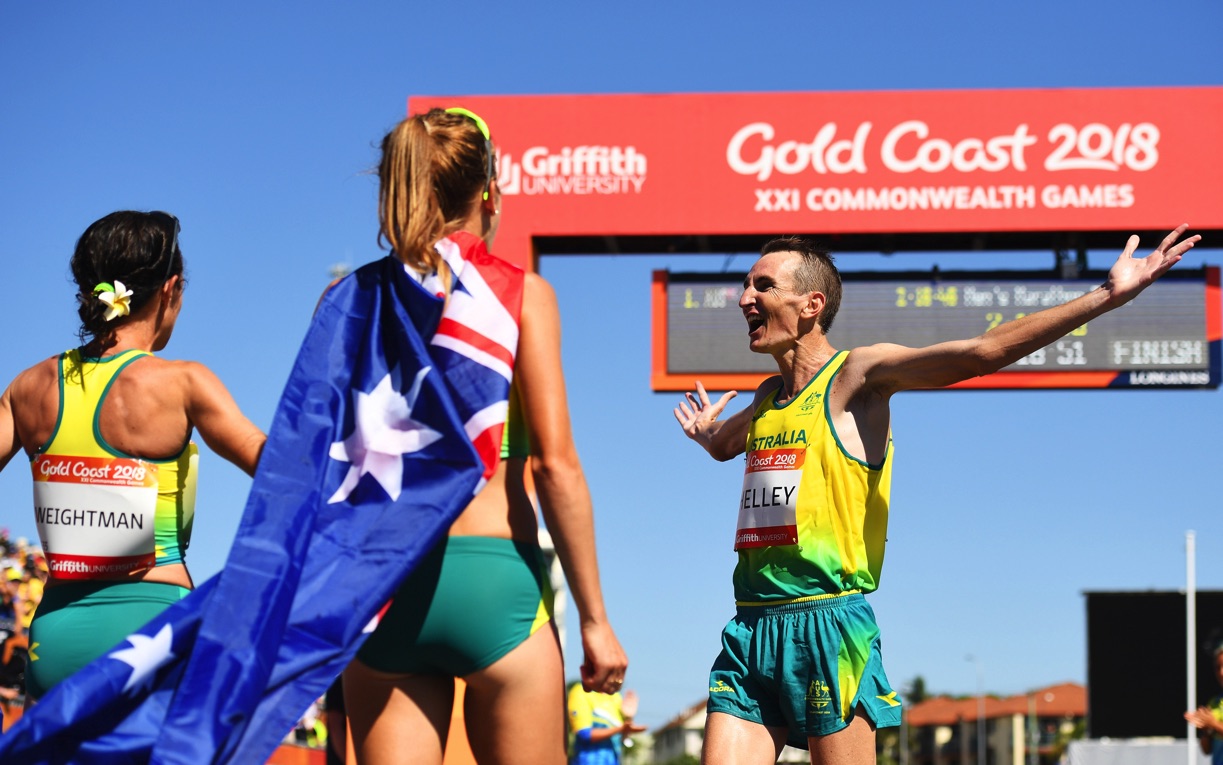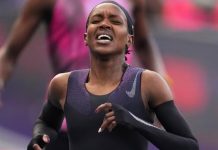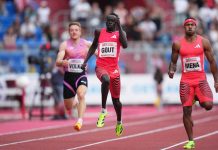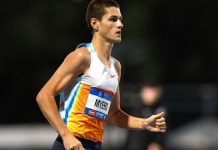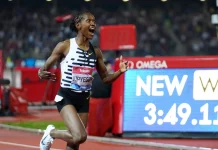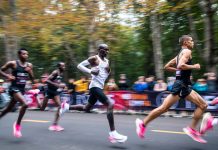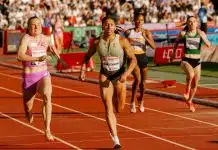There is no question that you aren’t going to qualify for the U.S. Olympic Trials Marathon or become a Cat I cyclist without exceptional natural aerobic power. But I don’t believe that aerobic power is a complete definition of endurance talent. Indeed, I can name three other talents that, if not quite as important as aerobic power, also make a significant contribution to endurance performance. These are trainability, durability, and racing sense. Let’s briefly review all four kinds of endurance talent.
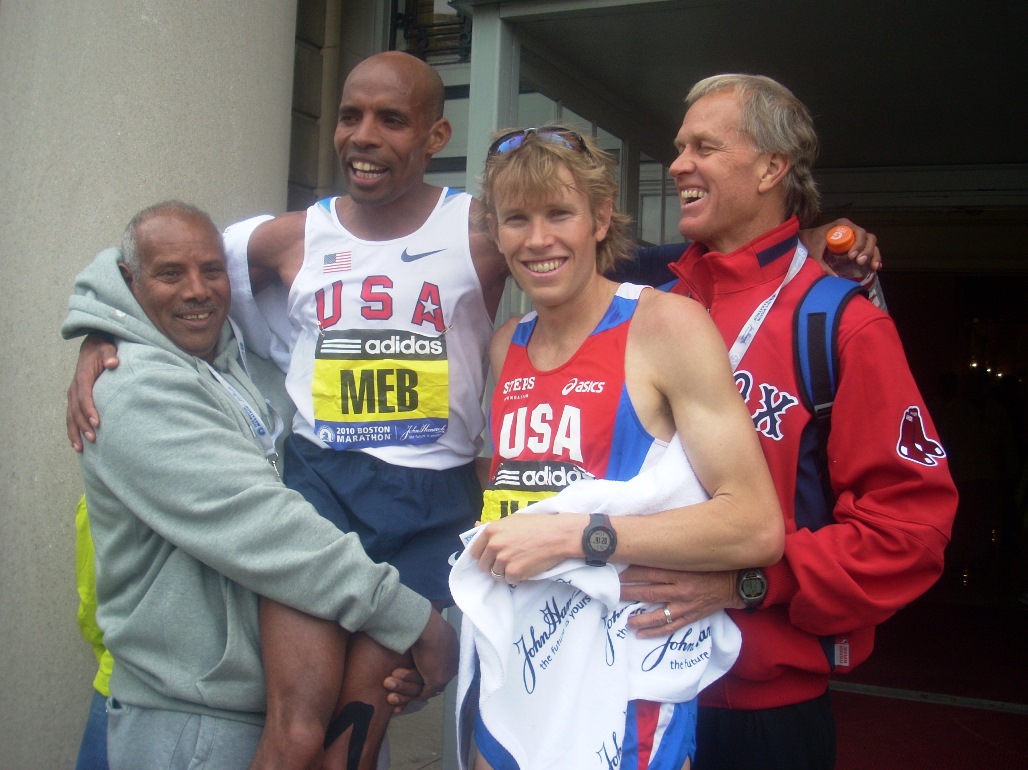
Aerobic Power
Recently, the Journal of Sports Science & Medicine published a comprehensive review of past research on the genetic underpinnings of elite marathon performance. A team of scientists led by Hannah Moir of Kingston University identified 16 polymorphisms in 14 genes that appear to have a strong association with elite marathon performance. Ten of these genes “code for transcription factors and coactivators primarily involved in metabolic pathways (i.e. adenosine triphosphate (ATP) generation, glucose and lipid metabolism, mitochondrial biogenesis, thermogenesis, angiogenesis and muscle fibre type composition).” In other words, these genes support the physiological machinery that enables a runner to release energy from metabolic fuels at a high rate with the aid of oxygen.
Three of the remaining four genes “code for enzymes involved in cardiovascular function such as blood pressure and vasodilation.” This essentially means they also support aerobic power but do so through a different type of mechanism. Only one gene among the 14—COL5A1—contributes to marathon performance in a way that has nothing to do with aerobic power. Specifically, it endows elite marathon runners with the stiff joints that enable their legs to function as highly efficient springs.
The authors of the review stress that what we currently know about the genetic underpinnings of elite marathon performance is a drop in the bucket compared to what we don’t yet know. Nevertheless, it’s clear from what we do know is that it’s mainly about aerobic power.
Trainability
There’s an important distinction to be made between what I call built-in fitness and trainability. Built-in fitness is the baseline performance capacity that is conferred by certain combinations of genes. In other words, it is pre-training fitness. Trainability is the ability to gain aerobic fitness in response to training. The genes that confer trainability are distinct from those that underlie built-in fitness. Some athletes have a high level of built-in fitness and yet training doesn’t make them much fitter because they lack the genes for trainability. Others have a low level of built-in fitness but get a lot fitter through training. Still others have neither built-in fitness genes nor trainability genes, while elite endurance athletes, of course, have both.
The good news is that scientists have determined that trainability genes are quite widespread in the human population—much more widespread than the gene combinations that confer a high level of built-in fitness. In one study, a team led by Claude Bouchard of the Pennington Research Centre’s Human Genomics Laboratory created a system for scoring trainability based on how many of the relevant genes an individual had. While there was a high degree of interindividual variation, a significantly greater number of subjects (52) had the highest possible score than had the lowest (36).
Other than genetic testing, the only way to find out if you have a lot of trainability is by training progressively over a long period of time and seeing what happens. I advise all athletes to assume they are highly trainable until and unless events prove otherwise!

Durability
Having a high level of trainability won’t do you much good if you can’t stay healthy long enough to take advantage of it. Although many overuse injuries are caused by correctible factors such as inadequate rest and excess bodyweight, research indicates that some athletes are more predisposed to injury than others. For example, some studies have found that different variants of the COL5A1 gene mentioned above predispose athletes to joint injuries, and a 2013 study found that certain variations were associated with the risk of muscle cramping in a marathon.
Other research suggests that differences in neuromuscular control also play a role in injury risk. Specifically, some athletes exhibit a greater degree of variation in their movement patterns than others do, a characteristic known as redundancy. Neither conscious nor noticeable to the naked eye, these variations spread around the stress of a repetitive activity such as running, reducing the likelihood of tissue breakdown.
Obviously, if you have particular genes or neuromuscular wiring patterns that predispose you to injury, there’s nothing you can do about it. This is frustrating for injury-prone athletes like myself, but instead of brooding on it, take advantage of all the factors you can control to minimize injury risk. These include cross-training, not training through pain, and using the right gear in the right way.
Racing Sense
The most overlooked and underappreciated endurance sports talent, in my estimation, is what I call racing sense, which is the ability to distribute your effort over the course of a race in such a way that you reach the finish line in close to the least time possible given your current physical capacity. It is a largely psychological talent that depends on the ability to 1) comprehend abstract distances (a horse may have horse sense, but it could never pace a marathon effectively because horses lack the brain power to comprehend abstract distances), 2) interpret perceived effort in a highly nuanced way (e.g., knowing how you should be feeling 83.77 miles into the bike leg of an Ironman), and 3) suffer.
Racing sense is generally thought of as a skill, and it is, but it’s a skill in the same sense that being able to throw a football through a 20-inch ring from 25 yards away is a skill. Sure, everyone gets better at it with practice, but some folks are just naturally good at it—better than others with any amount of practice.
As a coach, I never cease to be amazed by how bad most endurance athletes are at pacing. I’ll give you an example. Back in August I attended an annual adult running camp hosted by pro runners Stephanie and Ben Bruce. On the afternoon of the first full day, all 35 attendees ran a short time trial up a steep hill. None of us had ever run the hill before, but we did get a chance to size it up when we rode up to the finish line in vans and then jogged down to the start line. On the word “Go!” we launched. Two young bucks took off at a dead sprint, an insanely stupid decision, in my judgment, given the length (about 700 meters) and pitch (about 12%) of the hill. Meanwhile, I felt my way to the highest speed I felt I could sustain the whole way, passing the young bucks in the final 100 meters and winning a race I almost certainly would have lost if every runner had equal pacing sense.
“So, What’s Your Point?“
Too many endurance athletes believe or assume they don’t have talent. This bothers me, because I think it’s a self-limiting mindset that often lacks a solid basis in fact. As we’ve seen, endurance sports talent is not one thing—it’s four things, and chances are you’ve got at least one of them in some measure. My hope is that, in reviewing the four endurance sports talents with me, you will better appreciate your talent(s) and perhaps shift your approach to chasing improvement as an athlete.
About the the author – MATT FITZGERALD
Matt Fitzgerald is an acclaimed endurance sports coach, nutritionist, and author. His many books include The Endurance Diet, 80/20 Running, and How Bad Do You Want It? Matt’s writing also appears regularly in magazines and on websites such as Women’s Running and competitor.com. His online training plans have helped thousands of athletes of all experience and ability levels achieve their goals. Certified by the International Society of Sports Nutrition, Matt has consulted for numerous sports nutrition companies and he is the creator of the Diet Quality Score (DQS) smartphone app. A lifelong athlete, he speaks frequently at events throughout the United States and internationally. Matt can be reached at matt@8020endurance.com.
Want a readymade or custom training program from one of the top coaches in the world. Follow this link: http://8020endurance.com/8020-run-plans/
80/20 training plans are provided via TrainingPeaks.com or FinalSurge.com. Both platforms offer comprehensive scheduling, logging, and analysis with outstanding web and mobile applications for all 80/20 plans. Our structured workouts plans, below, represent the latest training technology that makes completing a workout easier than ever. Structured workout run plans measure your intensity by either Pace,
Heart Rate, or
Power.


